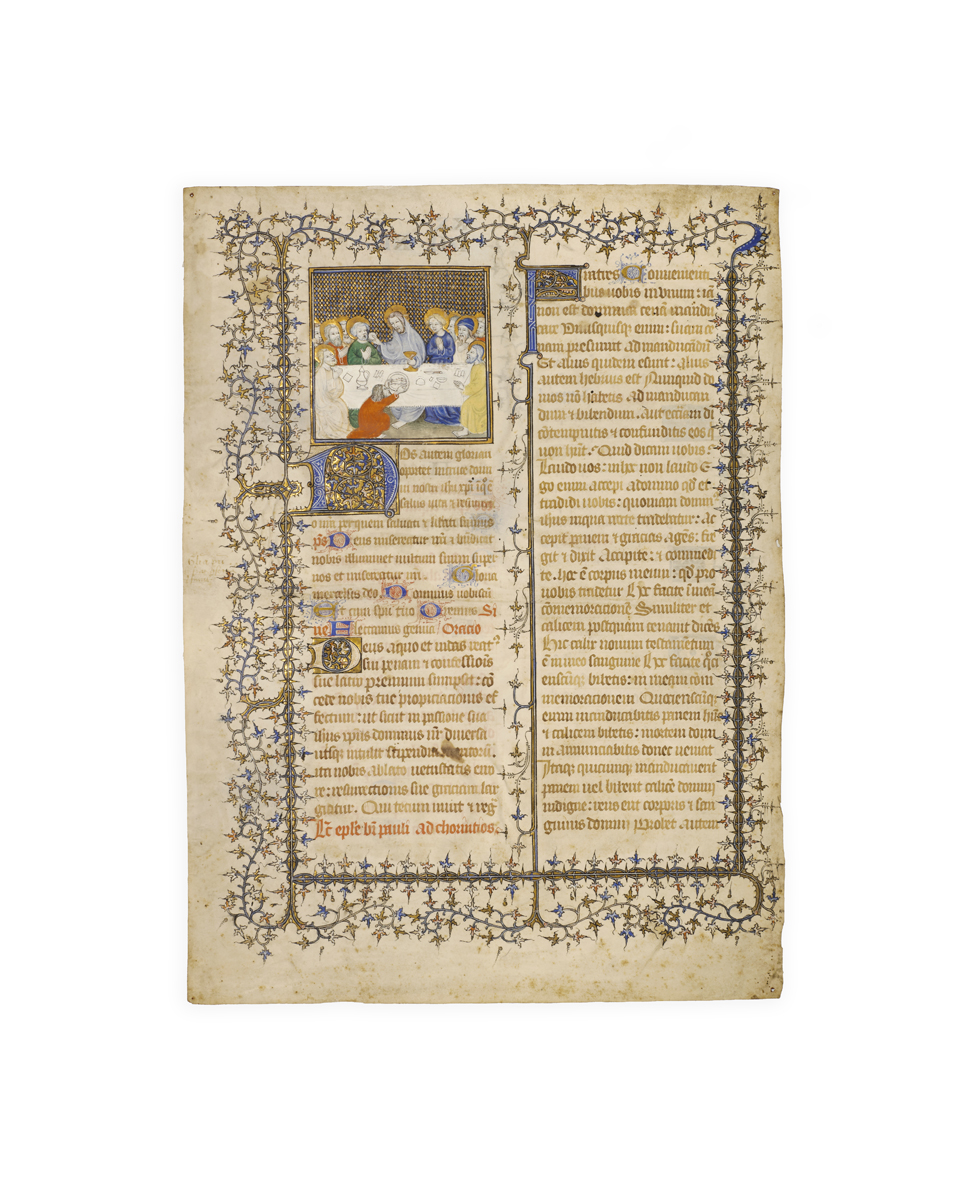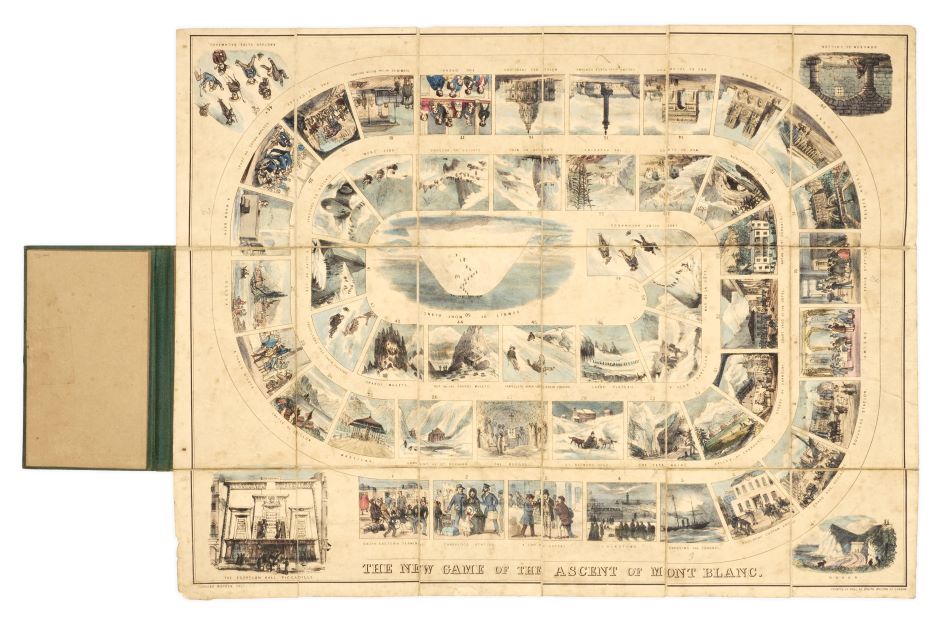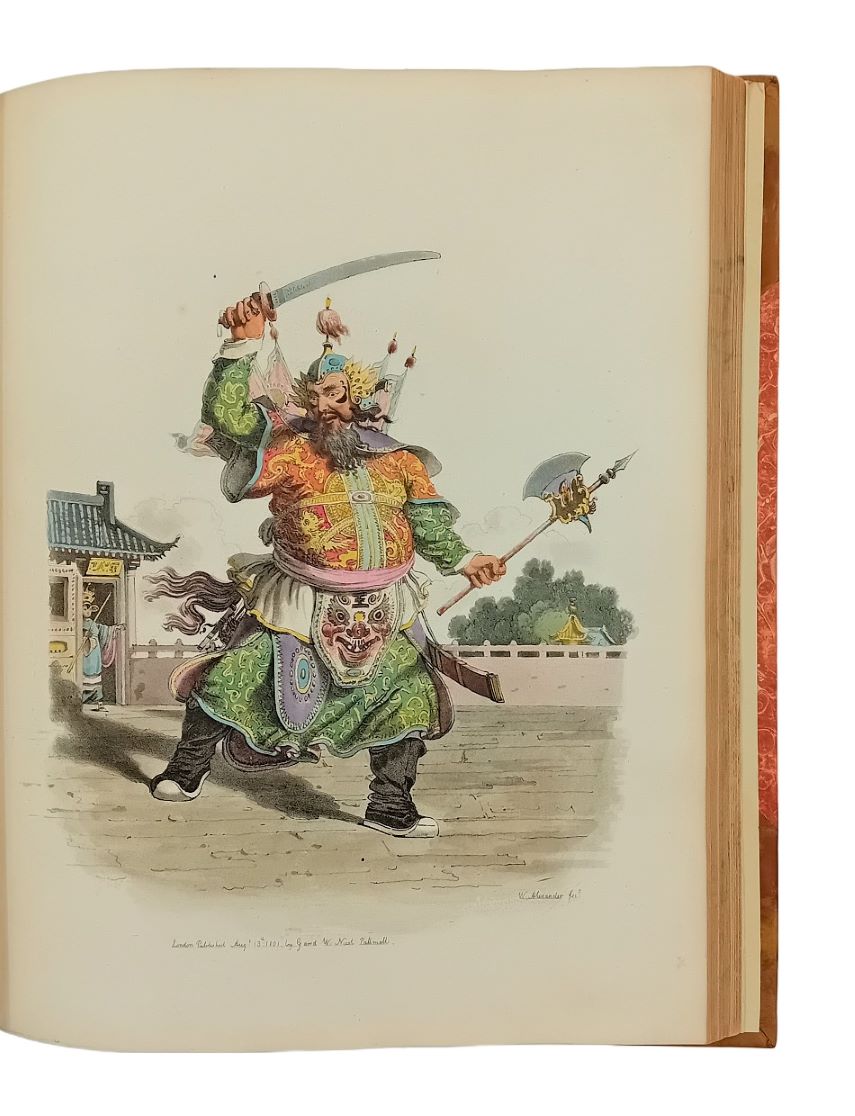
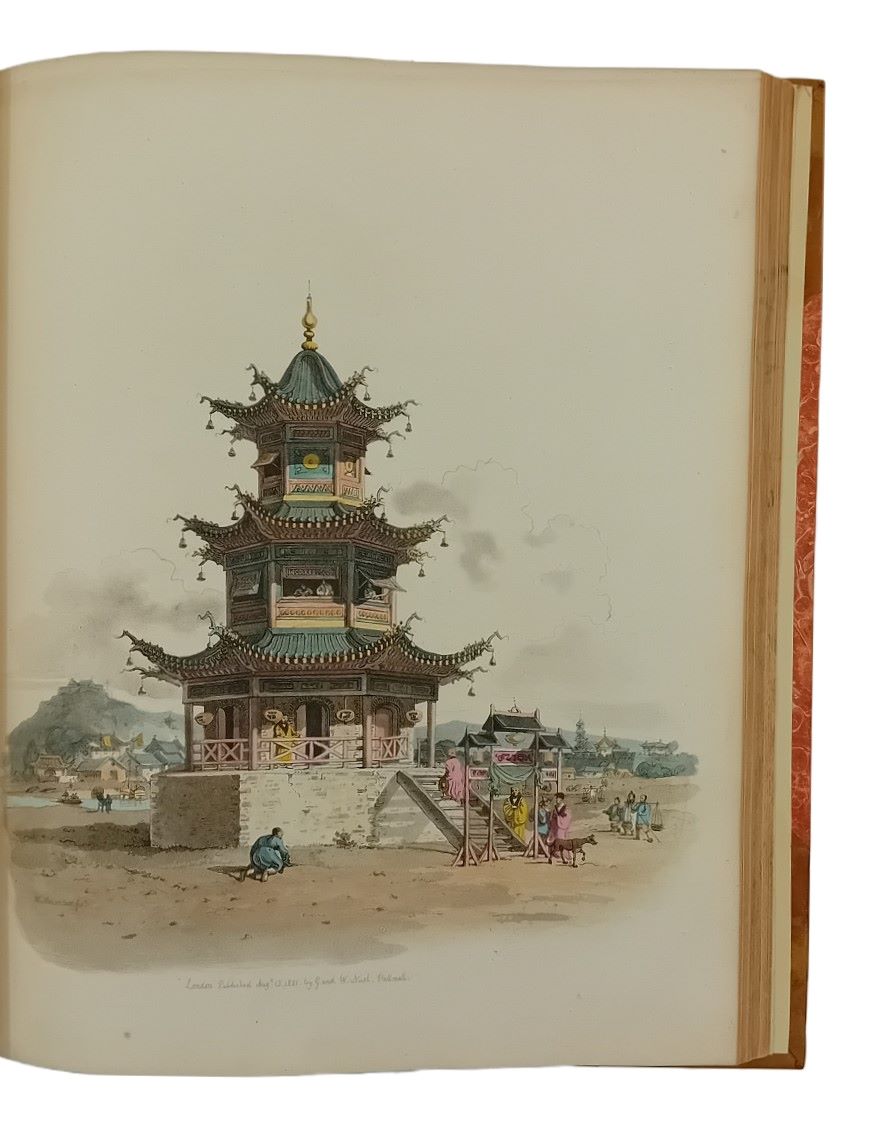
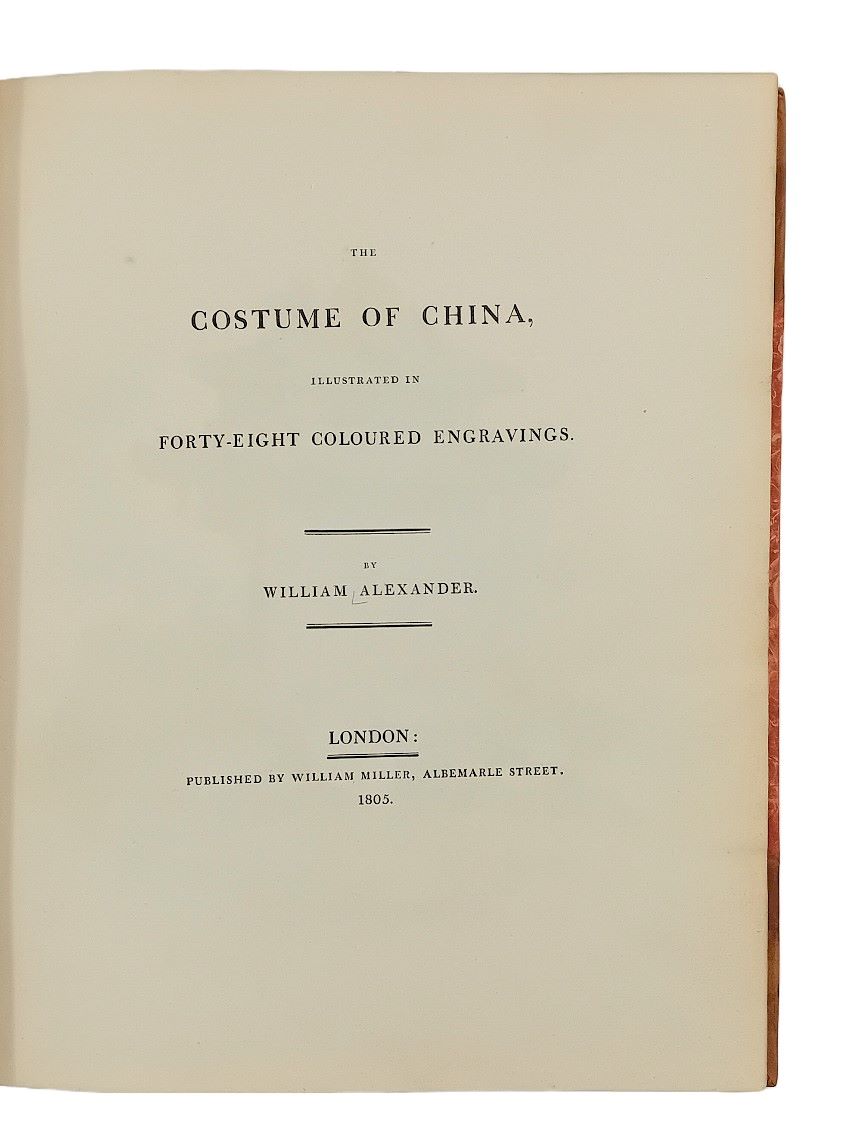
Chinese costumes
ALEXANDER, William.
The costume of China, illustrated in forty-eight coloured engravings …
London, William Miller, 1805.
Large quarto, ff. [47 (of 52)], [1 (advertisement for Pyne’s Costume of Great Britain)] of letterpress text, sepia dedication plate, and 44 (of 48) coloured aquatint plates; without: list of subscribers, text leaf to plate 34 (‘A soldier in common dress’), plates 7 (‘A group of trackers’), 8 (‘View of a bridge’), and 12 (‘South gate of the city of Ting-Hai’) and their facing text leaves, and plate 11 (‘Punishment of the Cangue’); some offsetting and light marks; 2 unrelated aquatints with 4 pp. of letterpress, two cutout engravings of ‘Swiss peasants’, and 11 blank leaves bound in at end; overall good in recent half calf, marbled sides, gilt lettering-piece to spine, marbled edges; modern bookseller’s ticket to rear free endpaper.

Added to your basket:
The costume of China, illustrated in forty-eight coloured engravings …
An incomplete first edition of William Alexander’s important and widely popular illustrated work on China, containing 44 of the original 48 aquatint plates. A one-time student of William Pars and later Julius Caesar Ibbetson, Alexander travelled to China as artist-in-residence for the diplomatic trade mission under George Macartney between 1792 and 1794. Although the mission was unsuccessful, it proved an important event for Alexander’s artistic development and popularity. From 1794 onwards, the London-based printer G. Nicol began publishing Alexander’s illustrations of the journey and in 1797 a number of his plates appeared in a large-scale folio atlas accompanying the official account of the mission by Macartney’s secretary and second-in-command George Leonard Staunton. Finally, in 1805, there appeared Alexander’s major full-scale pictorial study, a compilation of the plates published in parts by Nicol. The work contained depictions not only of Chinese dress across all tiers of Chinese society – including Mandarins, tradesmen, royalty, military, peasants, Buddhists, gamblers, comedians, and criminals – but also examples of Chinese architecture, trade, funeral rituals, and more.
According to Löwendahl, the plates were in two states, as soft-ground etchings and, as here, as coloured, aquatinted illustrations. Although devoid, unlike earlier eighteenth-century examples, of any direct Chinese artistic influence, Alexander’s illustrations were both popular and formative in shaping representations of Chinese dress back home, and came to greatly influence the decorative arts in Britain. They also proved useful in furthering Alexander’s career: in 1808, he was appointed assistant librarian and first keeper of prints and drawings at the British Museum.
Unfortunately the present volume is lacking four of Alexander’s plates (as detailed above), although it does include the half-title usually missing from most copies. It also includes, following Alexander’s index, four leaves from another contemporary illustrated work also published by G. Nicol, Charles Gould’s Oriental Drawings: sketched between the Years 1791 and 1798, first published in 1806: included is an illustration and description of ‘A Female Devotee of the Gentoo Cast’, a description of ‘A Village Church, with Indians worshipping the God Pollear’, and an illustration of ‘Sepoys of the Madras Establishment’.
Abbey, Travel 534; Colas 74; Cordier, Sinica 1858; Löwendahl 727; Lust 1118.
